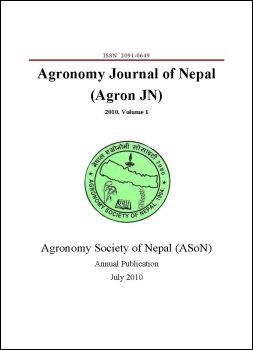Evaluation and promotion of resource conservation technologies in low land rice-wheat ecosystem
DOI:
https://doi.org/10.3126/ajn.v1i0.7540Keywords:
Resource conserving technologies, reduced tillage, surface seeding, zero tillageAbstract
The rice-wheat cropping system is critically important for food security, employment and livelihood of the people in the country. This cropping system is generally practiced in lowland ecosystem where heavier soil texture and excess soil moisture cause serious problems in the establishment of winter crops. Consequently, it increases tillage and land preparation cost and delays planting that resulted into very low yield and income. Conventional tillage and crop establishment methods require more resources, time, labor and energy which are increasingly becoming scarce and expensive. This paper illustrates the results of farmer participatory research on resource conservation technologies (RCTs) implemented in the farmers field of Rupendehi district for two successive years (2006/07 and 2007/08) with the purpose of enhancing adoption of such technologies that would sustain higher and more stable yields with the use of less resources and costs. The results of different RCTs such as zero tillage (ZT), reduced tillage with power tiller seed drill (PTSD) and power tiller rotary (PTR) and surface seeding (SS) revealed great saving in seed, land preparation/ seeding and irrigation costs with significant increment in yield and income indicating their suitability and superiority over conventional tillage (CT) in the given ecosystems.
DOI: http://dx.doi.org/10.3126/ajn.v1i0.7540
Agronomy Journal of Nepal (Agron JN) Vol. 1: 2010 pp.28-39
Downloads
Downloads
Published
How to Cite
Issue
Section
License
ASON permits for free use, distribution and reproduction in any medium if the original work is properly cited and not used for commercial purposes.




